1. Heating temperature and time
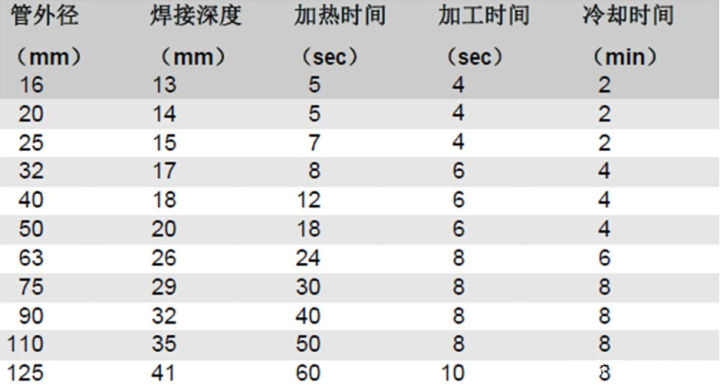
The welding temperature should be controlled at 260-270 ℃. When the temperature is too low, the heat fusion of the PPR pipe is not in place, and the pipe and the pipe fittings cannot be well welded. When the temperature is too high, the PPR tube melts too much, which is easy to cause blockage at the joint of the tube or the tube hole is too small to affect the flow. And PPR will become thin and soft and remain on the die, and carbonization will occur under long-term high temperature, which will affect the service life of the die.
Due to the importance of temperature, welding equipment needs to have a good temperature control system. If the temperature control system is not good, the temperature of some welding equipment will be heated to more than 300 degrees, and it is easy to cause welding quality problems when the temperature is too high. .
The heating time is related to the diameter of the PPR tube. For a tube with an outer diameter of 20mm, the heating time is 5s, and for a tube with an outer diameter of 25mm, the heating time is 7s. Too short or too long time will affect the welding quality of PPR pipe.
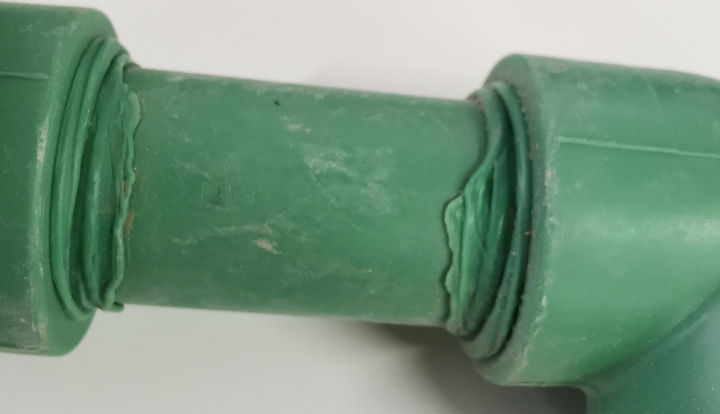
Too high temperature, excessive melting of PPR
2. Welding depth
The welding depth is related to the outer diameter of the PPR pipe. For a pipe with an outer diameter of 20mm, the minimum welding depth is 14mm, and for a pipe with an outer diameter of 25mm, the minimum welding depth is 15mm.
When the welding depth is too shallow, the welding area is not enough, and the water pipe is not firmly bonded. When the welding depth is too deep, the excess part will be squeezed inside the pipe fittings, reducing the inner diameter of the water pipe at the squeezed part, resulting in a reduction in the water flow of the water pipe, and even lead to welding blockage. Also, be careful not to attempt to turn the tubing and fittings while inserting them.
3. Whether the die head is worn
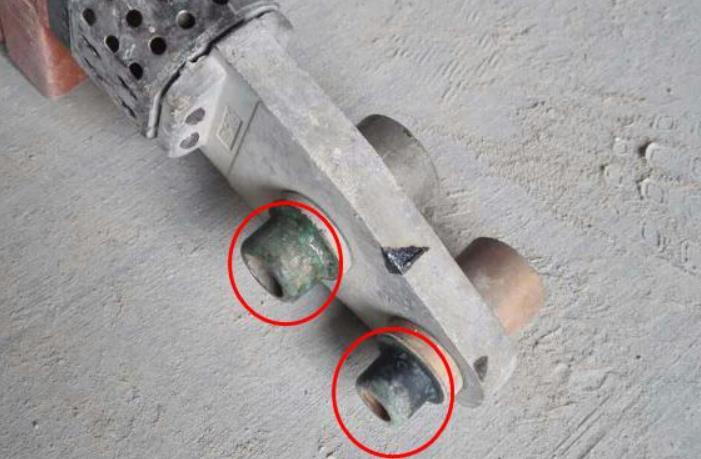
Die head adhered to melted PPR
There is a layer of coating containing Teflon on the die head of the welding machine. Teflon is a difficult-to-stick material. Most of the glues on the market have no bonding effect on it. It can effectively prevent PPR from remaining during welding. on the die. The quality of the die is good or bad, but the die must be kept clean. It is worth noting that Teflon will wear out after a long time, and the anti-stick properties of the die will be affected to a certain extent after wear. At this time, the die needs to be replaced, otherwise it will lead to detachment when welding the PPR tube. Welding hazard. Nowadays, many plumbers are reluctant to replace the die head. In fact, it is only a dozen or even a few dollars. For this reason, it is not worth it because of the small loss.
4. PPR raw materials are good or bad
The quality of the raw material of the water pipe will affect the ease of welding of the water pipe. 260-270°C is the welding temperature of PPR, which means that the material of PPR melts sufficiently at this temperature and is easy to weld. Here are two popular concepts, melting range and melting finger. For polymer materials, the melting temperature is a range, that is, the melting range (initial melting - final melting), and the flow properties after melting can be expressed by the melting index. How do these two parameters affect welding? It can be simply understood that the initial melting point is low, the material will melt faster, and the higher the melting index, the thinner the material will be after melting. These two characteristics directly affect the operation time of PPR tube welding.
The key technology of PPR raw material is here. The two parameters of good pure PPR raw material are better controlled, and the pipeline is easier to weld. The melting range and melting index of PPR raw materials doped with impurities will become larger, which will ultimately affect the ease of welding of PPR pipes.
5. Whether the water pipe port is cracked
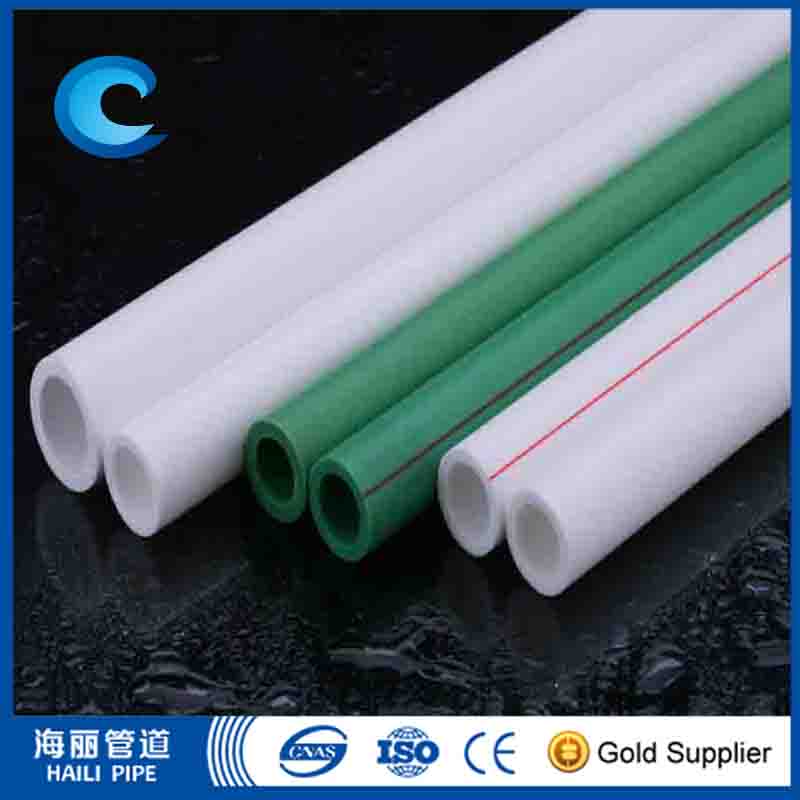
Due to the low temperature brittleness of PPR, especially in winter, the construction site environment is often complicated. If no attention is paid to protection, the PPR pipe will inevitably be damaged. Before welding water pipes, it is necessary for plumbers to check whether the pipes have been damaged, and avoid using water pipes with cracked ports to weld with fittings, resulting in water leakage. In addition, pay attention to the cleaning of the welded part of the pipe, so as not to cause the welding to be weak.
In summary, water pipe welding needs to pay attention to:
Choose a good water pipe that is easier to weld;
Select welding equipment with accurate temperature control to ensure that the temperature is controlled at 260-270 °C;
Ensure that the welding die head is clean and needs to be cleaned and replaced regularly;
Master the welding depth and avoid too shallow or too deep sockets;
Master the welding time, avoid too long and too short;
Before welding, be sure to check whether the water pipe has been damaged, and clean the parts to be welded;
Finally, the water pipe needs to be pressure tested after installation. Pressure testing is the last checkpoint in troubleshooting water pipe installation problems, and it is also the most effective way to avoid the harm caused by welding problems. Only after passing the pressure test, the water pipe can be regarded as the real installation.

147444.jpg)

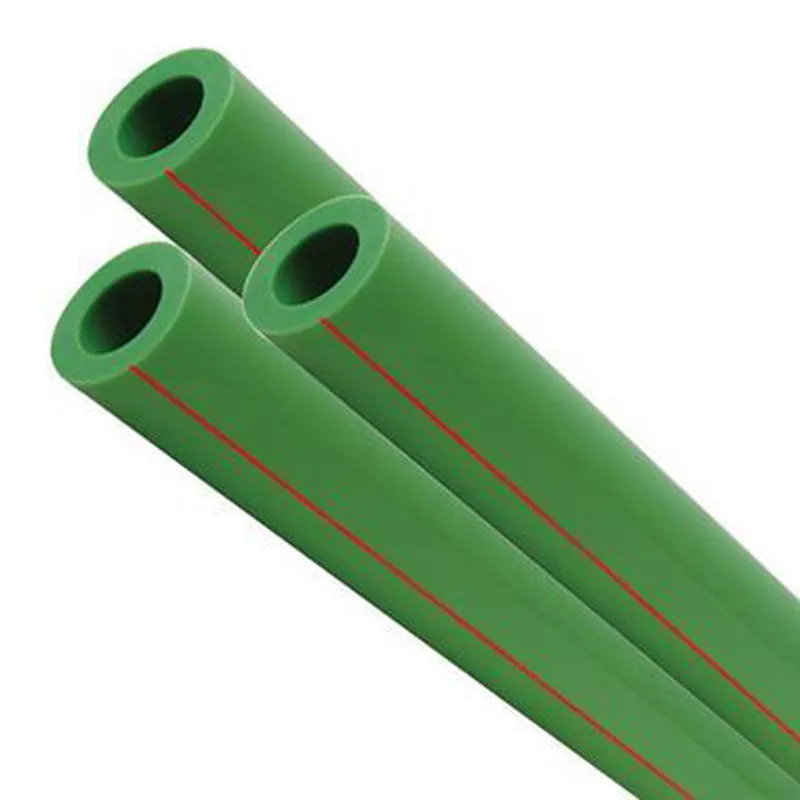


939.webp)

294.webp)
476.webp)
420.webp)
146.webp)
460.webp)
287.webp)
274.webp)
688.webp)


